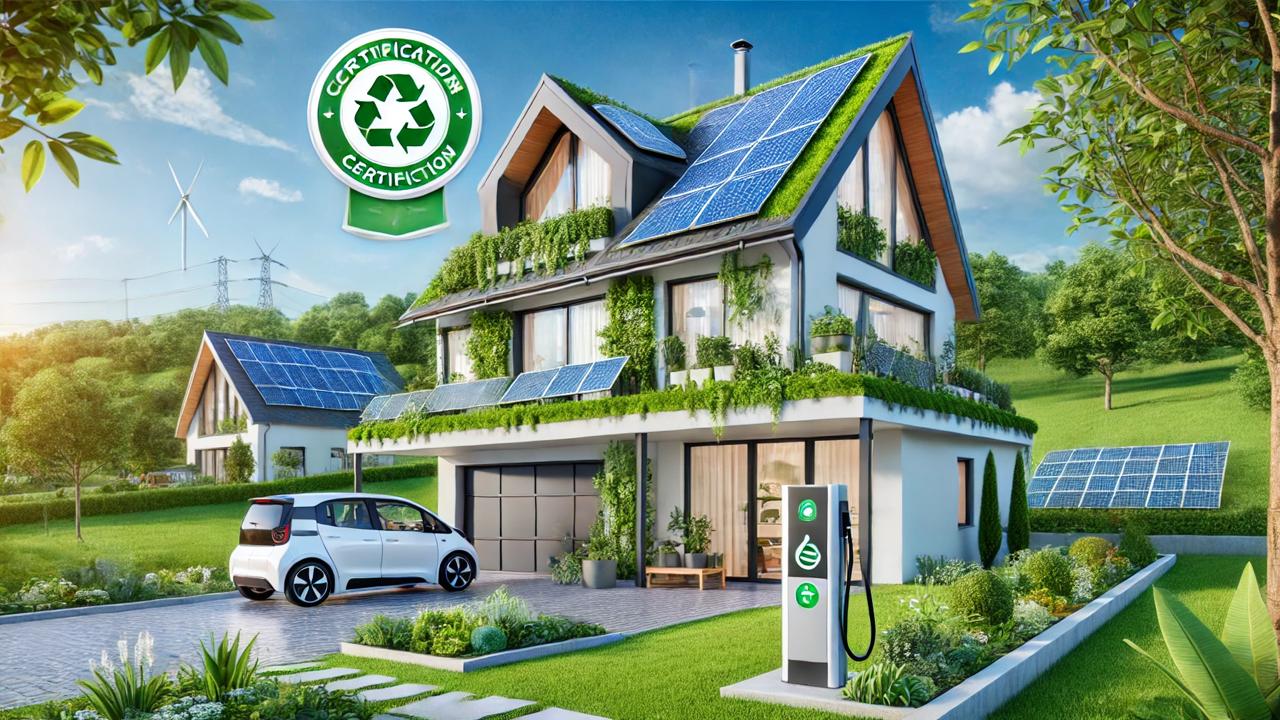
Sustainability has become a top priority for homeowners, builders, and governments alike. As more people seek ways to reduce their carbon footprint, Green Home Certifications have gained popularity. These certifications ensure that homes meet specific environmental standards, making them more energy-efficient, healthier, and environmentally friendly.
In this article, we will explore what Green Home Certifications are, their benefits, and how they contribute to the future of green building practices in Canada. Additionally, we will explain how to obtain a green home certification for your property and why it is a worthwhile investment.
1. What Are Green Home Certifications?
Green Home Certifications are official recognitions awarded to homes that meet strict sustainability standards. These certifications evaluate energy efficiency, water conservation, indoor air quality, and overall environmental impact.
The main goal of these certifications is to promote eco-friendly living by encouraging the use of sustainable materials, renewable energy sources, and efficient construction methods. They also serve as an assurance that a home is built or renovated with sustainability in mind.
2. Popular Green Home Certifications in Canada
Several organizations in Canada offer green certifications, each with unique criteria and benefits. Here are some of the most well-known programs:
LEED (Leadership in Energy and Environmental Design)
LEED is one of the most globally recognized green certification systems. It evaluates a home based on sustainability, energy efficiency, water conservation, and material selection. LEED-certified homes have lower utility costs and contribute to reducing greenhouse gas emissions.
ENERGY STAR for New Homes
The ENERGY STAR program certifies homes that meet higher-than-standard energy efficiency requirements. Certified homes consume at least 20% less energy than conventional homes, making them an excellent choice for homeowners looking to save on energy bills.
Net Zero Home Certification
A Net Zero home produces as much energy as it consumes, thanks to advanced insulation, high-performance windows, and renewable energy sources like solar panels. These homes are future-proof and highly desirable for environmentally conscious buyers.
R-2000 Certification
The R-2000 standard focuses on superior energy efficiency, airtightness, and indoor air quality. Homes with this certification exceed national building code requirements and provide long-term savings.
3. Benefits of Green Home Certifications
Obtaining a Green Home Certification offers numerous advantages for homeowners, the environment, and even the real estate market. Here are some of the key benefits:
Reduced Energy and Water Bills
Certified homes are designed to use energy and water more efficiently. Features like energy-efficient appliances, water-saving fixtures, and solar panels help homeowners lower their monthly utility costs.
Healthier Indoor Environment
Many certification programs require the use of non-toxic materials, proper ventilation, and enhanced air filtration systems. This results in improved indoor air quality, reducing the risk of respiratory issues and allergies.
Higher Property Value
Green-certified homes tend to have higher resale values. Buyers are increasingly looking for sustainable properties, making certified homes more attractive in the real estate market.
Environmental Impact
By reducing energy consumption, water waste, and carbon emissions, certified homes contribute to a healthier planet. Sustainable construction materials also help decrease deforestation and pollution.
4. How to Obtain a Green Home Certification for Your Property
If you want to certify your home as environmentally friendly, you need to follow a structured process. Here are the key steps to obtaining a Green Home Certification:
Step 1: Choose the Right Certification
Start by researching the different certification programs available in Canada. Depending on your goals and budget, you can choose from LEED, ENERGY STAR, Net Zero, R-2000, or others.
Step 2: Work with a Certified Professional
Hiring a green building consultant or an accredited professional can help you navigate the certification process. These experts assess your home’s design, materials, and construction practices to ensure they align with certification requirements.
Step 3: Conduct an Energy Audit
Many certifications require an energy audit to evaluate your home’s efficiency. This involves checking insulation, heating and cooling systems, windows, and appliances to identify areas for improvement.
Step 4: Implement Sustainable Upgrades
Based on the audit results, make necessary upgrades to meet the certification standards. This could include installing solar panels, upgrading insulation, using energy-efficient appliances, or improving water conservation measures.
Step 5: Submit Documentation and Apply for Certification
Once all necessary upgrades are completed, submit your application along with supporting documents. The certification body will review your home and conduct an inspection if required. Upon approval, you will receive your Green Home Certification.
5. The Future of Green Building Practices in Canada
As sustainability becomes a national priority, the future of green building practices in Canada looks promising. Several trends indicate that green home certifications will continue to gain traction:
Stricter Building Codes
The Canadian government is continuously updating building regulations to improve energy efficiency and sustainability. In the future, all new homes may be required to meet specific green standards.
Increased Incentives
Federal and provincial governments are offering financial incentives, rebates, and tax credits to encourage homeowners and builders to adopt green building practices. These incentives make it easier and more affordable to invest in sustainable homes.
Advancements in Green Technology
Innovations such as smart home automation, advanced insulation materials, and improved solar technology are making it easier to build energy-efficient homes. As technology advances, homeowners will have more options for reducing their environmental impact.
Growing Market Demand
Homebuyers are increasingly prioritizing sustainability when searching for properties. As awareness grows, green-certified homes will become a standard in the housing market, driving demand for eco-friendly properties.
Conclusion
Green Home Certifications are a valuable investment for homeowners who want to enhance their property’s efficiency, value, and environmental impact. With a variety of certification programs available, homeowners can choose one that aligns with their sustainability goals.
As the future of green building practices in Canada continues to evolve, obtaining a certification is not only beneficial but also a smart financial and environmental decision. By following the necessary steps, you can learn how to obtain a green home certification for your property and contribute to a more sustainable future.
Whether you are building a new home or upgrading an existing one, investing in green certification ensures that your property meets the highest environmental standards while providing long-term savings and health benefits






Leave a Reply
You must be logged in to post a comment.